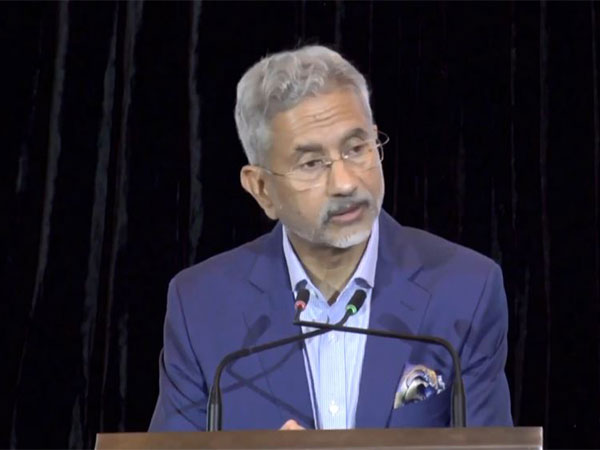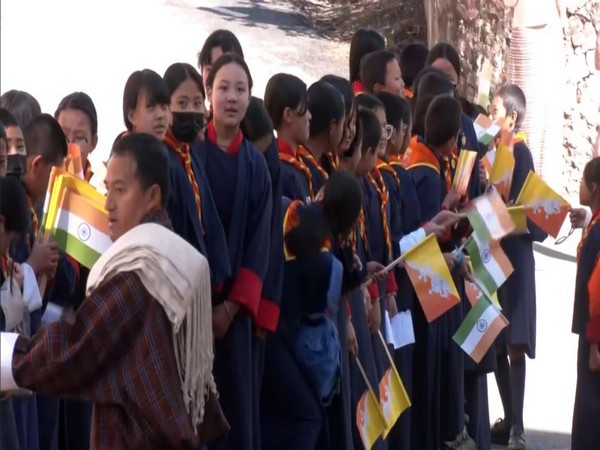
Future of Laos, its fiscal stability, hinges greatly on China: Expert

Bangkok [Thailand], July 3 (ANI): The Southeast Asian nation of Laos is struggling to meet its debt obligations amid sovereign downgrades and depleted foreign reserves.
Peter Janssen, writing in Asia Times said that the future of the country’s economy, and its fiscal stability, hinges greatly on mainland China.
This week Laos redeemed a USD 150 million bonds listed on the Singapore Exchange, chipping away only slightly at its ballooning external debt owed over the next five years, reported Asia Times.
Moody’s and Fitch credit rating agencies both downgraded Laos’ sovereign ratings last year in response to the nominally communist country’s escalating public debt, declining foreign exchange reserves and concerns about potential defaults on debts coming due, reported Asia Times.
The economic slowdown in 2020 came at a time when Laos’ public debt was on the rise, reaching 72 per cent of GDP according to Lao government estimates last year, and with big loans falling due.
In August 2020, Moody’s downgraded its sovereign rating for Laos to Caa2 with a negative outlook to reflect its growing concerns about the double whammy of falling foreign exchange reserves and rising debt. Fitch followed suit in September 2020, downgrading its Laos rating to CCC from B-, reported Asia Times.
“Our key rating concern for Laos, and the reason for the rating at CCC which by our definition indicates that default is a possibility, is the country’s external finances,” said Jeremy Zook, Fitch’s lead analyst for Laos.
“Laos does have a very challenging external debt repayment schedule, with just over USD 1 billion coming due per year over the next five years,” he told a recent Fitch forum.
Such ratings are likely a self-fulfilling prophesy since they make it harder for Laos to raise new bonds on the international market to repay those coming dues, said Janssen.
Fitch’s Zook noted that Laos’ foreign exchange reserves had improved somewhat, up from USD 800 million in June 2020, to an average of USD 1.2 billion between December 2020 to May 2021.
But this was partly due to a central bank-to-central bank “swap line” established between the Bank of Laos and the People’s Bank of China in January.
The swap pumped renminbi into the Lao central bank, theoretically as a prepayment for Chinese imports, thus boosting Laos’ foreign exchange reserves, analysts said. Over half of Laos’ external debt is held by China, wrote Janssen.
While Laos has handled the Covid crisis relatively well, the country is suffering a second wave of the pandemic, forcing the government to announce a lockdown from April 21 until July 4.
The Covid crisis had already taken the wind out of Laos’ previously budding tourism industry, which formerly accounted for about 10 per cent of GDP and has now disappeared.
“Half of the upcoming debt payments in the next five years is coming due in China, so whether China supplied re-financing or delays some of the debt repayments will be a critical factor, in our consideration, for debt sustainability,” said Fitch’s Zook.
A portion of the upcoming debt will be due to the Export-Import Bank of China, which has extended a concessionary loan at a 2.5 per cent interest rate for USD 470 million as part of Laos’ contribution to the Lao-China Railway project.
The 414-kilometre, medium-speed train, joining southern China to Vientiane, is scheduled to open on December 2 this year. Sources in Vientiane say the deadline has not been delayed despite disruptions to construction caused by the Covid crisis last year.
The rail link is owned by a joint venture – the Laos China Railway Company – set up in 2016, in which Laos holds 30 per cent and China 70 per cent, reported Asia Times.
The project has an estimated cost of USD 6 billion, but Laos’ debt portion of the project is about 8 per cent of the total investment, still large for a country whose total GDP is only USD 18 billion.
Under the joint venture agreement, Laos’ cash commitment to the project is USD 720 million, of which USD 250 million derives from the national budget during the five-year construction period, and the remaining USD 470 was borrowed from the EXIM Bank of China with a five-year grace period and 35-year maturity.
One should expect more such “joint ventures” in the future as Laos seeks to avoid debt, which might be a bad thing for the Lao people who are displaced by such projects without adequate compensation but might be an overall good thing for the economy, wrote Janssen.
“Laos is focusing more on equity financing, which in our view could alleviate some of their liquidity risks and be positive for ratings,” said Fitch’s Zook.
In March this year, for instance, the EDL national power company entered a joint venture with the state-owned China Southern Power Grid Company to build and manage a large portion of the national electricity grid over the next 25 years before being handed back to the Lao government.
EDL’s percentage in the venture is estimated at 10 per cent in the form of its existing grid assets, giving the China Southern Power Grid a controlling share in setting prices and making deals with neighbours, reported Asia Times.
The USD 2 billion project has the goal of achieving Laos’ long-held ambition to become the “battery of Southeast Asia,” with transmission lines extending to its neighbours.
The Chinese state enterprise will also pay Laos an upfront concession fee and make annual payments, sources said.
“So they get the twin benefits of allowing Laos to connect north-south, east-west and truly become the battery of Southeast Asia and it doesn’t put a debt burden on the country,” said Adisorn Singhasacha, CEO of Twin Pine Group, a Bangkok-based financial advisory company that has arranged seven sovereign bonds for Laos and corporate bonds for national power producer EDL-Gen since introducing the neighbouring country to Thailand’s capital market in 2013.
Such concessions come at the cost of handing over Laos’ national assets to China, albeit for a limited period, but they do avoid further debt, much of which is already owed to China, explained Janssen.
“China is obviously a huge player in Laos with about 50 per cent of upcoming debt repayment in coming years are due to China,” noted Fitch’s Zook. “So whether China steps in to provide more finance for Laos is very central to our rating and that’s something that is a bit difficult for us to monitor.” (ANI)

















POST COMMENTS (1)
ASHOK IYER